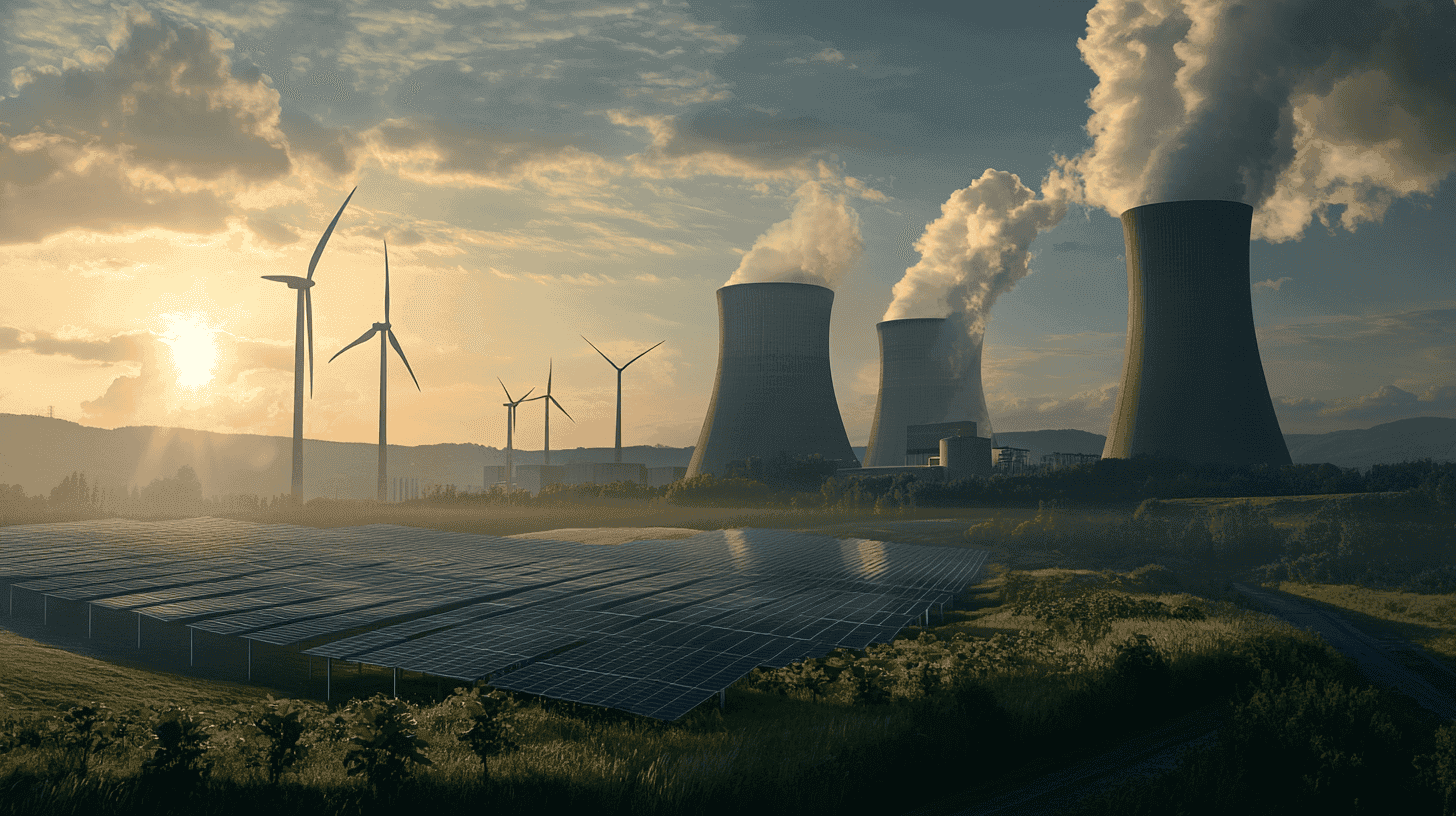Poland will build its first small modular reactor
Poland's state-owned energy company, Orlen, has announced an agreement to build the country's first small modular nuclear reactor.
Published on August 29, 2025

AI-generated image of a nuclear plant next to solar and wind energy plants.
Team IO+ selects and features the most important news stories on innovation and technology, carefully curated by our editors.
Poland's state-owned energy company, Orlen, has announced an agreement to build the country's first small modular nuclear reactor (SMR) in partnership with Synthos Green Energy. The project, backed by US agencies, will use GE Hitachi's BWRX-300 technology, the first of its kind in Europe, and will be located in Włocławek. However, the two companies have been at an impasse for over a year and a half, unable to agree on terms regarding control of the SMR technology. This latest development comes as Poland aims to produce 23% of its electricity from nuclear by 2040, and as other European nations also explore the potential of SMRs to diversify their low-carbon baseload options.
Small Modular Reactors (SMRs) are nuclear reactors with a power capacity of up to 300 MWh, approximately one-third the size of conventional reactors. Their modular design enables factory assembly, resulting in faster and more cost-effective installation. SMRs offer several advantages, including the ability to be installed on or off existing grids and to provide electricity to remote areas. They can also serve as a backup power source and potentially revive decommissioned sites, such as coal mines. Furthermore, SMRs have simpler and safer designs that rely on passive systems, such as gravity and natural circulation, for shutdown, requiring less fuel. However, they also produce up to 30 times more nuclear waste due to neutron leakage and require higher enrichment of the U235 isotope, making the spent fuel more radioactive.
Poland's SMR project
Orlen's CEO, Ireneusz Fąfara, stated that Poland will host the first BWRX-300 small modular reactor in Europe, highlighting the construction of 'the energy system of tomorrow'. The European Commission approved a joint venture between SGE and Orlen, named OSGE, in 2023. This joint venture then signed an agreement with American and Canadian corporations to develop SMRs. Following this, two US government agencies announced up to $4 billion in support.
Despite these advancements, Orlen and SGE have faced challenges in agreeing on cooperation terms for the past 1.5 years, as reported by Business Insider Polska, particularly regarding control over technology rights. Fąfara noted that they spent over a year negotiating terms to safeguard Orlen's interests and secure direct access to US SMR technology for their joint venture with Synthos.
However, preparing the environmental report required for potential SMR construction in Włocławek is expected to take around 2 years. In other Polish nuclear developments, a South Korean firm withdrew from plans to build another nuclear plant in Poland in August 2025, citing changes in the new government's energy policy, though the Polish energy ministry denied this.
Dutch SMR prospects
In the Netherlands, there's also growing interest in SMRs as a way to diversify the country's low-carbon baseload options. Datacenter operator Equinix signed a Letter of Intent with ULC-Energy for a power purchase agreement (PPA) of up to 250 MWe from SMRs. ULC-Energy has selected Rolls-Royce SMR as its preferred technology provider and is developing plans to deploy 470 MWe light water SMRs.
Research from TNO and NRG PALLAS indicates that SMRs can play a crucial role in the future Dutch energy system, contributing to CO2 reduction from large-scale industrial processes by providing process heat. The study suggests that by 2050, there could be room for 2 to more than 13 SMRs, depending on future industrial activity and heat demand. While nuclear power plants are more expensive than wind turbines and solar panels, TNO's research indicates that an energy system without new nuclear power plants would incur system costs 1% to 2.5% higher due to the need for more expensive flexibility options, such as energy storage.
